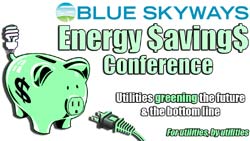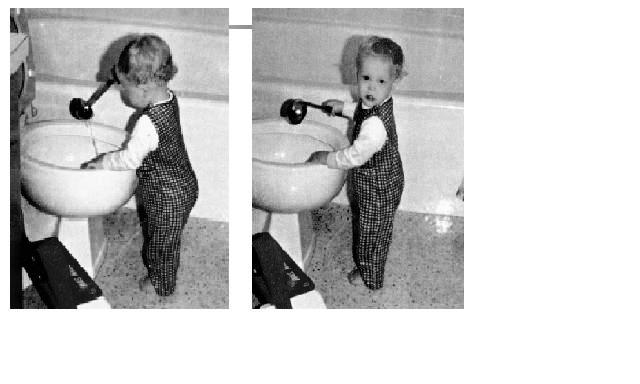About the author: Lina Younes has been working for EPA since 2002 and chairs EPA’s Multilingual Communications Task Force. Prior to joining EPA, she was the Washington bureau chief for two Puerto Rican newspapers and she has worked for several government agencies.
Lea la versión en español a continuación de esta entrada en inglés.
Some links exit EPA or have Spanish content. 
The other day I was translating a press release on energy vampires. Energy vampires, you may ask? Yes, they are lurking around in our homes, backyards, and communities. No, I’m not trying to be funny nor creepy. They are real! I’m talking about those electronic devices, big and small, that continue to suck up energy (and money from our wallets) even when they are officially “off”.
I confess that I had fun with the translation. As it often happens, I learned something in the process. These electronic devices continue to use energy even when we turn them off at night, so we recommend pulling the plug or using a power strip to limit the flow of energy when these appliances (TVs, VCRs, computers, chargers, etc.) are not in use.
On my way home from work that night, I saw a house that definitely gets the prize for Energy Vampire of the Month, perhaps, Energy Vampire of the Year! Every year the owners go the extra mile to decorate their house to the nth degree according to the holiday of the season. Be it Halloween, Christmas, Easter, the 4th of July, you name it. The place is full of decorations. But we’re not talking only about simple colorful decorations covering every square inch—there are lights galore!
So, in addition to eliminating the mysterious energy vampires in our daily lives, we should start thinking of those vintage holiday decorations that might have been in the family for years, but are not environmentally friendly. Maybe it’s time for some greener substitutions. There are new decorative lights with LED (light emitting diodes) technology that consume 75% less energy than conventional incandescent light strands. These EnergyStar certified lights will help you get into the holiday spirit without risking heart failure when you get the bill.
So by all means, go green this Halloween, but pull the plug on those energy vampires!
Los vampiros de energía nos amargan la existencia de muchas maneras
Sobre la autor: Lina M. F. Younes ha trabajado en la EPA desde el 2002 y está a cargo del Grupo de Trabajo sobre Comunicaciones Multilingües. Como periodista, dirigió la oficina en Washington de dos periódicos puertorriqueños y ha laborado en varias agencias gubernamentales.
El otro día estaba traduciendo un comunicado de prensa sobre los vampiros de energía. ¿Se preguntarán si existen esos vampiros? Efectivamente, están al asecho en nuestros hogares, patios y comunidades. No, no estoy bromeando ni tratando de asustarle. ¡Existen! Estoy hablando de los aparatos electrónicos grandes y pequeños que continúan chupando energía (y el dinero de sus bolsillos) aún cuando están oficialmente apagados.
Confieso que fue divertido hacer la traducción. Y como sucede muchas veces, aprendí algo. Estos aparatos electrónicos continúan utilizando energía aún cuando están apagados por la noche, por lo tanto recomendamos que los desenchufen o utilicen un interruptor especial (power strip) para interrumpir el flujo de energía a enseres como televisores, VCRs, computadoras, cargadores, etc., cuando no están en uso.
Cuando regresaba a casa las otras noches, ví una casa que definitivamente se gana el premio de Vampiro Energético del Mes, o quizás, Vampiro de Energía del Año! Cada año los dueños decoran su casa a la enésima potencia dependiendo de la temática de la celebración del momento. Sea la fiesta de las brujas (Halloween), las Navidades, la Pascua Florida o el cuatro de julio. Cualquier ocasión es buena para desplegar las decoraciones. Y no estoy hablando simplemente de coloridas decoraciones que cubren cada centímetro cuadrado del lugar. ¡Allí hay luces por doquier!
Asimismo, además de eliminar los misteriosos vampiros de energía de nuestras vidas cotidianas, debemos pensar en las antiguas decoraciones de luces que llevan años nuestros hogares, pero no son muy beneficiosas para el medio ambiente. Quizás ha llegado el momento de optar por sustituciones que sean más favorables. Hay nuevas luces decorativas con tecnología LED (diodos emisores de luz, por sus siglas en inglés) que consumen 75% menos energía que las bombillas de luz incandescente convencionales. Estas luces con la certificación de EnergyStar pueden ayudarle a entrar en el ambiente de las fiestas sin correr el riesgo de un fallo cardíaco cuando le llegue la factura de la luz.
Por ende, adopte prácticas verdes en la fiesta de las brujas y desenchufe esos vampiros de energía!


 EPA offices in Dallas and Kansas City, through a public/private partnership group – the
EPA offices in Dallas and Kansas City, through a public/private partnership group – the  Each week we write about the science behind environmental protection.
Each week we write about the science behind environmental protection.  In 1987, I was fortunate for two reasons – I received a promotion to manage a group of scientists who evaluated occupational and residential exposure to pesticides, and I became a father for the first time. Watching my young daughter crawl around on the grass and picking up a small pebble to explore with her mouth made me wonder about possible exposure of young children to pesticides used on lawns – at the same time, I realized that our group of scientists had very little data to answer the question. Thus, I began on a 20-year journey to promote research related to better understanding children’s environmental exposure.
In 1987, I was fortunate for two reasons – I received a promotion to manage a group of scientists who evaluated occupational and residential exposure to pesticides, and I became a father for the first time. Watching my young daughter crawl around on the grass and picking up a small pebble to explore with her mouth made me wonder about possible exposure of young children to pesticides used on lawns – at the same time, I realized that our group of scientists had very little data to answer the question. Thus, I began on a 20-year journey to promote research related to better understanding children’s environmental exposure. Take some time and watch a toddler very carefully and you will begin to understand just how unique children’s behaviors can be compared to adults – here is a great example:
Take some time and watch a toddler very carefully and you will begin to understand just how unique children’s behaviors can be compared to adults – here is a great example: